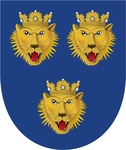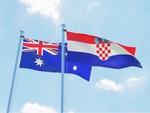Dalmacija Sydney Croatian Club was officially opened at its current premises at 16 Myoora Road Terrey Hills, NSW, in 1989.
DalmatiaDalmatia ("Dalmacija"), a tourist region of four counties, is the central part of the Adriatic coast that stretches, with its gentle green highlands hinterland and rivers and its thousand islands, from the North Velebit mountain range down to the southernmost border of Croatia south of Dubrovnik. Their diversity, the natural wealth, the national parks and the exceptional wealth of monuments of culture and history and its historical heritage make it a leader in Croatian tourism whose traditions in these parts has a history of more than 160 years. It is an area that tells the story of Croatian history better than any book could. The first Croatian kings ruled from here, and it was here, during a thousand years of history, that both rulers and artists have left their mark – preserved to this day in the authentic stone of the coastal cities.
Dalmatia is also characterised by the highest number of sunny days on some of the islands and the deep southern coast number as many as 315 a year. On the terraces and rest areas of the stone-paved squares and promenades of the coastal cities and towns, a sunny December day can be enjoyed out of doors!
Sun, vegetation and a unique combination of a mountain range that rises right out of the sea gives the sea's blueness a special beauty. In the ADAC data analysis of sea cleanliness, the Adriatic has for years been one of the Mediterranean's cleanest seas, without "black points", in which the islands and open seas are set apart in particular, untouched by the pollution of civilisation and a real paradise for nautical tourists.
Numerous rivers to this day supply the entire coast and the islands with drinking water. With their origins in Karst regions, the Dalmatian rivers Zrmanja, Cetina, Krka and Neretva are among the cleanest rivers in Europe. Without industrial facilities in the vicinity of these rivers to threaten the unique flavour and content of the water, Dalmatia, with a quarter of Croatia's overall population, has one of the best tasting drinking waters in Europe in its domestic water faucets.
A preserved environment, its air cleansed by the brisk north-easterly Bora wind, and warmth, have given Dalmatia the possibility of Europe's only experimental gathering of condensed dew for drinking water (under the control of the European Association of Meteorological Research) located in the city of Zadar and on the small island of Biševo near the neighbouring island of Vis.
Historical heritage and monuments of culture are a part of UNESCO's global heritage in the cities of Trogir, Split, Šibenik and Dubrovnik. The antiquity and early-Christianity complexes in Solin near Split, on Hvar, Korčula, in Ston, Bribir and Biskupija are exceptional finds in international archaeology, while the cathedrals in Zadar, Šibenik, Trogir, Split, Hvar, Korčula and Dubrovnik to this day preserve the most valuable works of the renowned artists of their time. Every coastal place settled during the antiquity preserves in its treasuries and museums a part of the history of an area where artists have left their mark over the centuries, as have military leaders, rulers and passing conquerors.
Few and far between are areas like the Dalmatian coast on which hundreds of kilometres of bays offer gentle beaches under harsh mountain peaks. Nature lovers are drawn equally to the mountain peaks, known to shine white with snow in mid-summer, as they are to their green foothills with their pebble and sandy beaches so that the opportunities for an active holiday in nature in the area during most of the year are endless: from surfing, sailing, fishing and diving to see the remains of the sunken antiquity and medieval ships that once sailed these routes, to the most varied activities in the green Dalmatian hinterland like horseback riding, alpinism, canoeing, rafting and trekking...
But Dalmatia's true soul is revealed at a table rich with the healthy and simple dishes that are the chief trait of Dalmatian cuisine, founded on a pleasant combination of the best of Mediterranean culinary art and a tradition of gastronomic heritage reaching back to antiquity.
Dalmatian cuisine with its choice of ingredients, and its preparation method meets all recommendations on healthy and balanced eating. The table of a Dalmatian hostess has various kinds of fish, shellfish, crustaceans, octopus, squid and salted and fresh olives, green leafy vegetables, wild plants and aromatic herbs, figs and grapes, honey, raisins and citrus fruits.
When it comes to meat, Dalmatian hams, dry-cured in the north-easterly Bora wind and served with sheep's milk cheese and lamb prepared under a bakers lid on an open fire without parallel.
To all should be added red and white wines, among which are some of the first ten appellation wines in the world. The ingredients of Dalmatian cuisine carry in their flavours and aromas the clean sea, in which they were caught, the fertile plains of the hinterland, the ecologically preserved earth in which they grew, the sun which gave sweetness to the fruit and flavour to the wine and the irreplaceable olive oil of exceptional aroma. |




